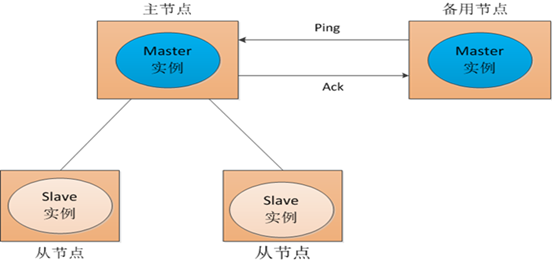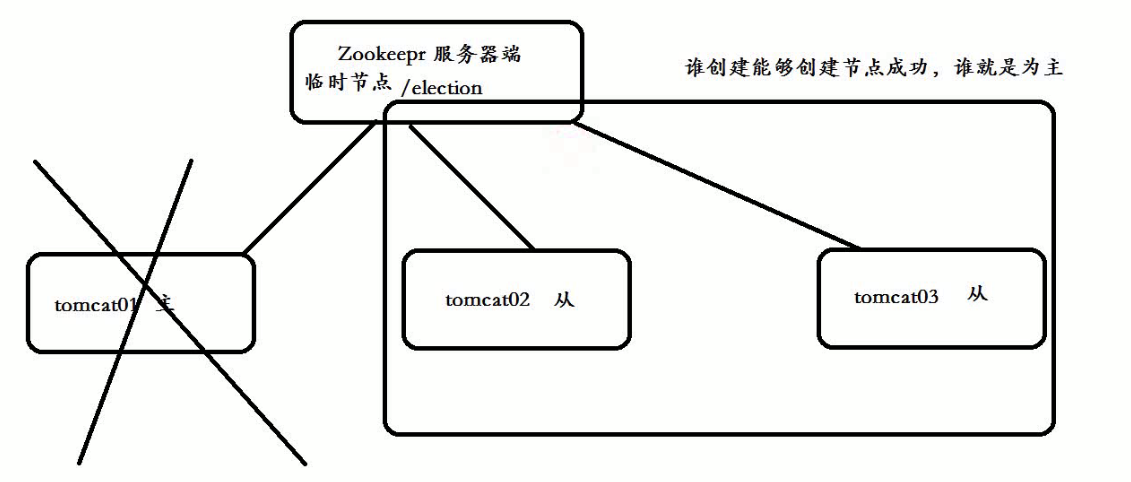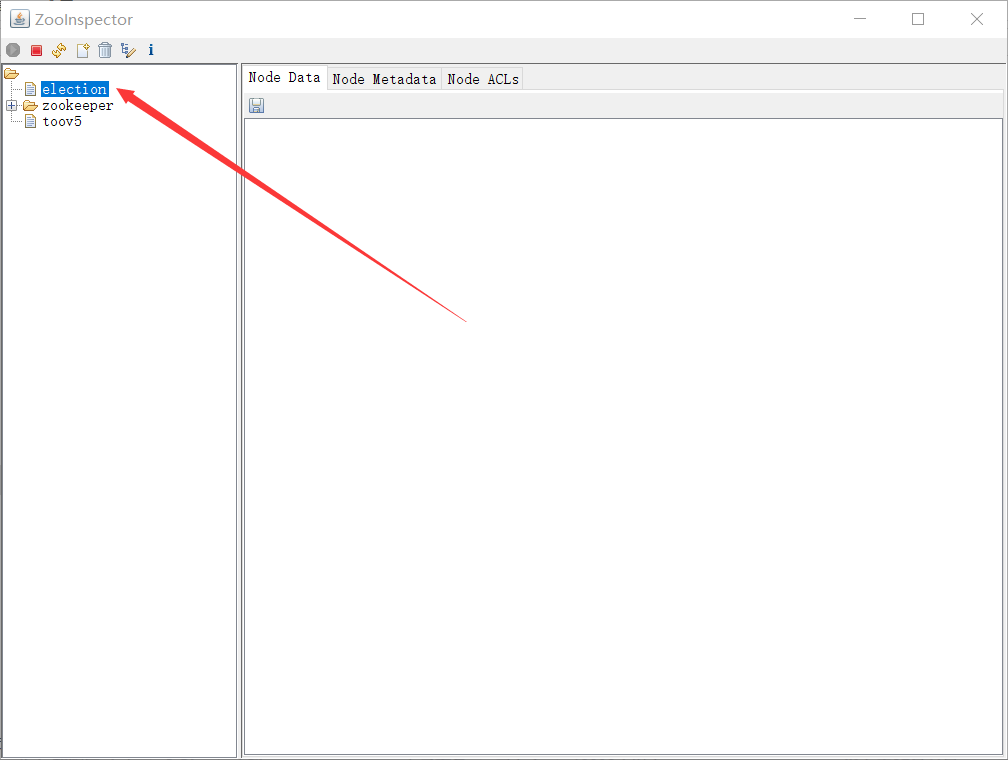master选举使用场景及结构
现在很多时候我们的服务需要7*24小时工作,假如一台机器挂了,我们希望能有其它机器顶替它继续工作。此类问题现在多采用master-salve模式,也就是常说的主从模式,正常情况下主机提供服务,备机负责监听主机状态,当主机异常时,可以自动切换到备机继续提供服务(这里有点儿类似于数据库主库跟备库,备机正常情况下只监听,不工作),这个切换过程中选出下一个主机的过程就是master选举。
对于以上提到的场景,传统的解决方式是采用一个备用节点,这个备用节点定期给当前主节点发送ping包,主节点收到ping包后会向备用节点发送应答ack,当备用节点收到应答,就认为主节点还活着,让它继续提供服务,否则就认为主节点挂掉了,自己将开始行使主节点职责。如图1所示:

使用Zookeeper实现服务master选举
在哨兵机制中 只能一个主 多个从!
使用zk可以实现之!
原理: 多个服务器在启动时候,会在Zookeeper上创建相同的临时节点,谁如果能够创建成功,谁就为主!(节点保证唯一)
如果主服务器宕机,会话连接断开。临时节点删除。其他节点服务选举开始

创建项目:
pom文件: 注意springboot 整合 zk的包
<parent><groupId>org.springframework.boot</groupId><artifactId>spring-boot-starter-parent</artifactId><version>2.0.0.RELEASE</version></parent><dependencies><dependency><groupId>com.101tec</groupId><artifactId>zkclient</artifactId><version>0.10</version><exclusions><exclusion><artifactId>slf4j-api</artifactId><groupId>org.slf4j</groupId></exclusion><exclusion><artifactId>log4j</artifactId><groupId>log4j</groupId></exclusion><exclusion><artifactId>slf4j-log4j12</artifactId><groupId>org.slf4j</groupId></exclusion></exclusions></dependency><dependency><groupId>org.springframework.boot</groupId><artifactId>spring-boot-starter-web</artifactId></dependency></dependencies> 后台controller
package com.toov5.zkMaster;import org.springframework.beans.factory.annotation.Value; import org.springframework.web.bind.annotation.RequestMapping; import org.springframework.web.bind.annotation.RestController;@RestController public class IndexController {@Value("${server.port}")private String serverPort;@RequestMapping("getServerInfo")public String getServerInfo(){return "serverPort"+serverPort+(ElectionMaster.isSurvival? "选举为主" :"选举为从");}public static void main(String[] args) {//1,项目启动的时候 在zk创建临时节点//2,谁能够创建成功谁就是主服务器//3,使用服务监听节点是否被删除,如果被删。 重新开始创建节点 }}
启动加载运行类
package com.toov5.zkMaster;import org.I0Itec.zkclient.IZkDataListener; import org.I0Itec.zkclient.ZkClient; import org.springframework.beans.factory.annotation.Value; import org.springframework.boot.ApplicationArguments; import org.springframework.boot.ApplicationRunner; import org.springframework.stereotype.Component;@Component public class MyApplicationRunner implements ApplicationRunner{private ZkClient zkClient = new ZkClient("192.168.91.5:2181");private String path = "/election";@Value("${server.port}")private String serverPort;//启动后执行的方法public void run(ApplicationArguments args) throws Exception { //重写这个方法System.out.println("项目启动成功!"); //1,项目启动的时候 在zk创建临时节点 createEphemeral();//2,谁能够创建成功谁就是主服务器//3,使用服务监听节点是否被删除,如果被删。 重新开始创建节点zkClient.subscribeDataChanges(path, new IZkDataListener() {//返回节点如果被删除后 返回通知public void handleDataDeleted(String arg0) throws Exception {//重新创建(选举)System.out.println("开始重新选举策略");createEphemeral();}public void handleDataChange(String arg0, Object arg1) throws Exception {// TODO Auto-generated method stub }});}private void createEphemeral(){try {zkClient.createEphemeral(path); System.out.println("serverport"+serverPort+",选举成功!");ElectionMaster.isSurvival=true; //标志位true 单个jvm共享} catch (Exception e) {System.out.println("该节点已经存在");ElectionMaster.isSurvival=false;}}}
全局变量
package com.toov5.zkMaster;public class ElectionMaster {//服务器info信息 是否存活public static boolean isSurvival; //静态的 标志下 服务器是否还存活 }
运行类
package com.toov5.zkMaster;public class ElectionMaster {//服务器info信息 是否存活public static boolean isSurvival; //静态的 标志下 服务器是否还存活 }
yml:
server:port: 8088
运行,启动两个端口

一个主 一个从
然后关掉主,重新选举从(需要等待一段时间,强制关闭有延迟的)






)
)

 failed: The TLS connection was non-properly terminated.)
)









